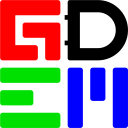
GDEM (Electronic and Microelectronic Design Group) is composed of faculty members, contract researchers, and research fellows, working in collaboration with undergraduate and postgraduate students from both the Universidad Politécnica de Madrid (UPM) and international institutions. GDEM was officially recognized as an R&D group by UPM in 2005.
The Group was established in 1996, with its headquarters at the School of Telecommunications Systems and Engineering of the UPM, and was later integrated into CITSEM as one of its founding groups. Since its inception, GDEM has focused on conducting R&D projects in close collaboration with industry, as well as through competitive public funding calls.
GDEM’s core expertise lies in the development and processing of multimodal image acquisition systems (including hyperspectral imaging, depth sensing, magnetic resonance, microscopy, etc.) leveraging advanced Machine Learning and Deep Learning techniques. These technologies are primarily applied in the healthcare, industrial and aquaculture sectors, although their applicability extends beyond these fields.
Through its sustained research activity, the group has developed solid experience in electronic design, algorithm optimization, and image registration, positioning itself as a reference in the field of electronic and microelectronic system design.






Currently, GDEM is actively engaged in several lines of research, focusing its main activity on three main areas:
- Multi-scenario (macro/micro) image acquisition and adaptation systems, enabling information extraction through technologies such as hyperspectral imaging, depth estimation (ToF, plenoptic, stereo), Spatial Frequency Domain Imaging (SFDI), and related techniques.
- Development and validation of advanced computer vision methods, including feature extraction, image registration, and the application of Machine Learning and Deep Learning techniques to the acquired data.
- Hardware acceleration and edge processing, along with the optimization and generalization of existing methods and algorithms, enabling reuse of methodologies, data sources and machine learning models across diverse operational environments.
The work in these areas has largely been carried out whitin the framework of national and international R&D projects. The main outcomes of these efforts have been disseminated through numerous conference presentations and journal publications.
GDEM’s research is currently being applied in the following areas:
- Precision medicine
- Intelligent aquaculture
- Industry (automotive)
- RISC-V architectures and applications



